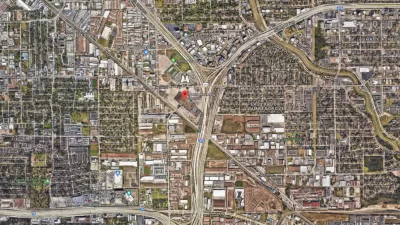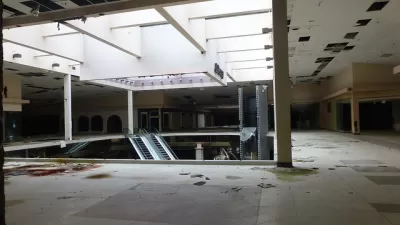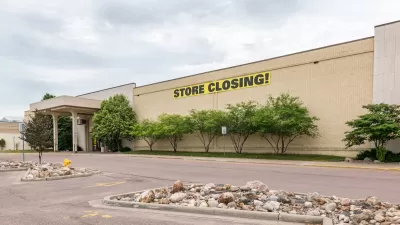Stephanie Clifford documents the extraordinary lengths malls across the country are going to in hopes of attracting customers in the face of e-commerce and a battered economy.
Victor Gruen probably didn't have vegetable gardens and casinos in mind when he envisioned the country's first enclosed shopping malls as community centers. But in communities across the country who cannot afford to demolish malls suffering from high vacancy levels or attract new tenants, some extraordinary uses are bringing in visitors. According to Clifford, "Schools, medical clinics, call centers, government offices and even churches are now standard tenants in malls."
"The efforts reflect a shift in how Americans want to shop today: rather than going to big, overwhelming malls, many prefer places where stores can be entered from the street, featuring restaurants, entertainment and other Main Street mainstays. Also, as commuters in urban areas shift to public transportation, the giant parking lots are no longer needed."
"While some malls can afford to change with the times, many cannot, and over all, there are too many malls today, urban planners say. The vacancy rate at shopping centers and strip malls was 11 percent in the last quarter of 2011, the highest level since 1991, according to the research firm Reis. Larger regional malls fared better, with a vacancy rate of 9.2 percent."
FULL STORY: How About Gardening or Golfing at the Mall?

Alabama: Trump Terminates Settlements for Black Communities Harmed By Raw Sewage
Trump deemed the landmark civil rights agreement “illegal DEI and environmental justice policy.”

Planetizen Federal Action Tracker
A weekly monitor of how Trump’s orders and actions are impacting planners and planning in America.

The 120 Year Old Tiny Home Villages That Sheltered San Francisco’s Earthquake Refugees
More than a century ago, San Francisco mobilized to house thousands of residents displaced by the 1906 earthquake. Could their strategy offer a model for the present?

In Both Crashes and Crime, Public Transportation is Far Safer than Driving
Contrary to popular assumptions, public transportation has far lower crash and crime rates than automobile travel. For safer communities, improve and encourage transit travel.

Report: Zoning Reforms Should Complement Nashville’s Ambitious Transit Plan
Without reform, restrictive zoning codes will limit the impact of the city’s planned transit expansion and could exclude some of the residents who depend on transit the most.

Judge Orders Release of Frozen IRA, IIJA Funding
The decision is a victory for environmental groups who charged that freezing funds for critical infrastructure and disaster response programs caused “real and irreparable harm” to communities.
Urban Design for Planners 1: Software Tools
This six-course series explores essential urban design concepts using open source software and equips planners with the tools they need to participate fully in the urban design process.
Planning for Universal Design
Learn the tools for implementing Universal Design in planning regulations.
Clanton & Associates, Inc.
Jessamine County Fiscal Court
Institute for Housing and Urban Development Studies (IHS)
City of Grandview
Harvard GSD Executive Education
Toledo-Lucas County Plan Commissions
Salt Lake City
NYU Wagner Graduate School of Public Service





























